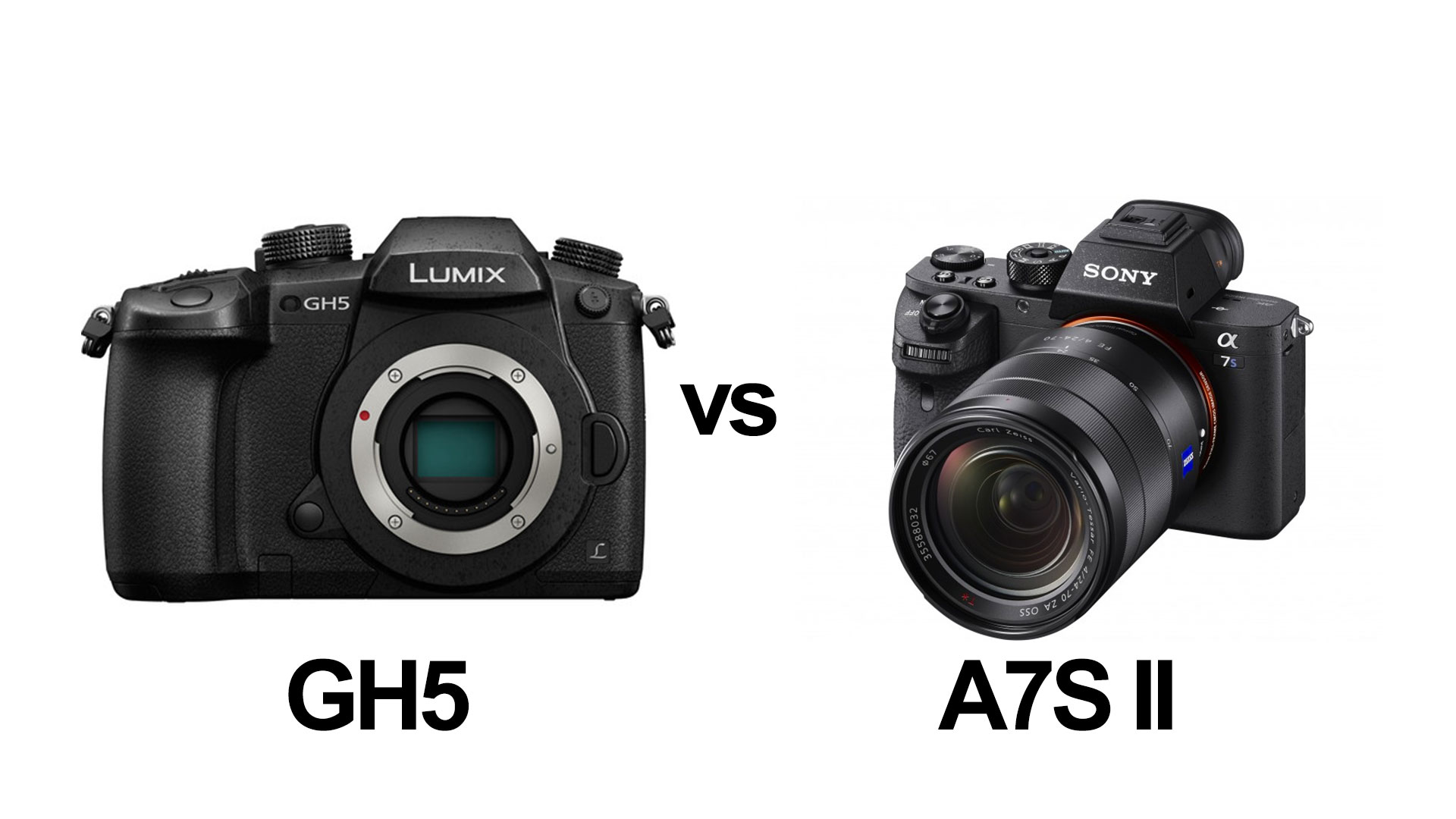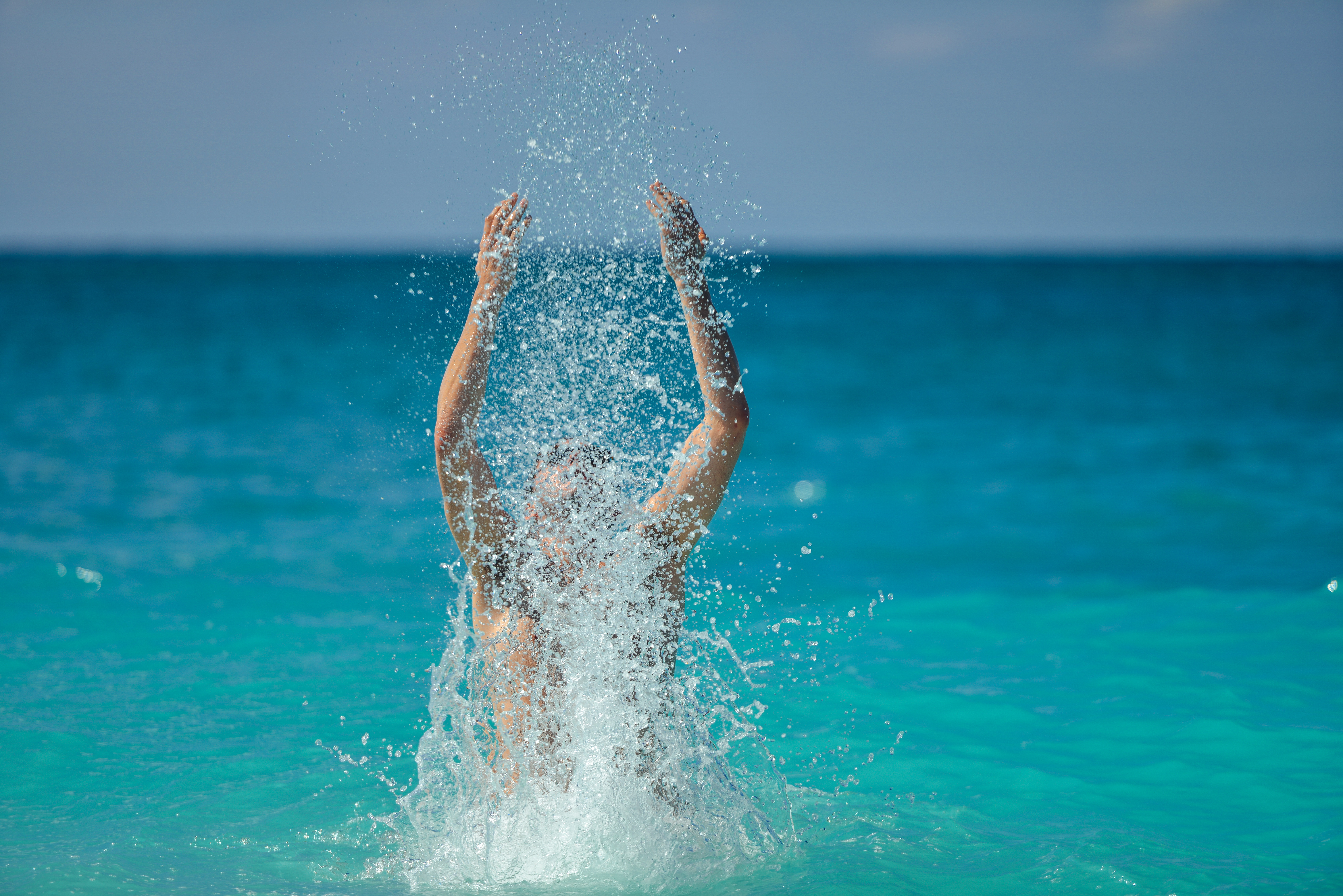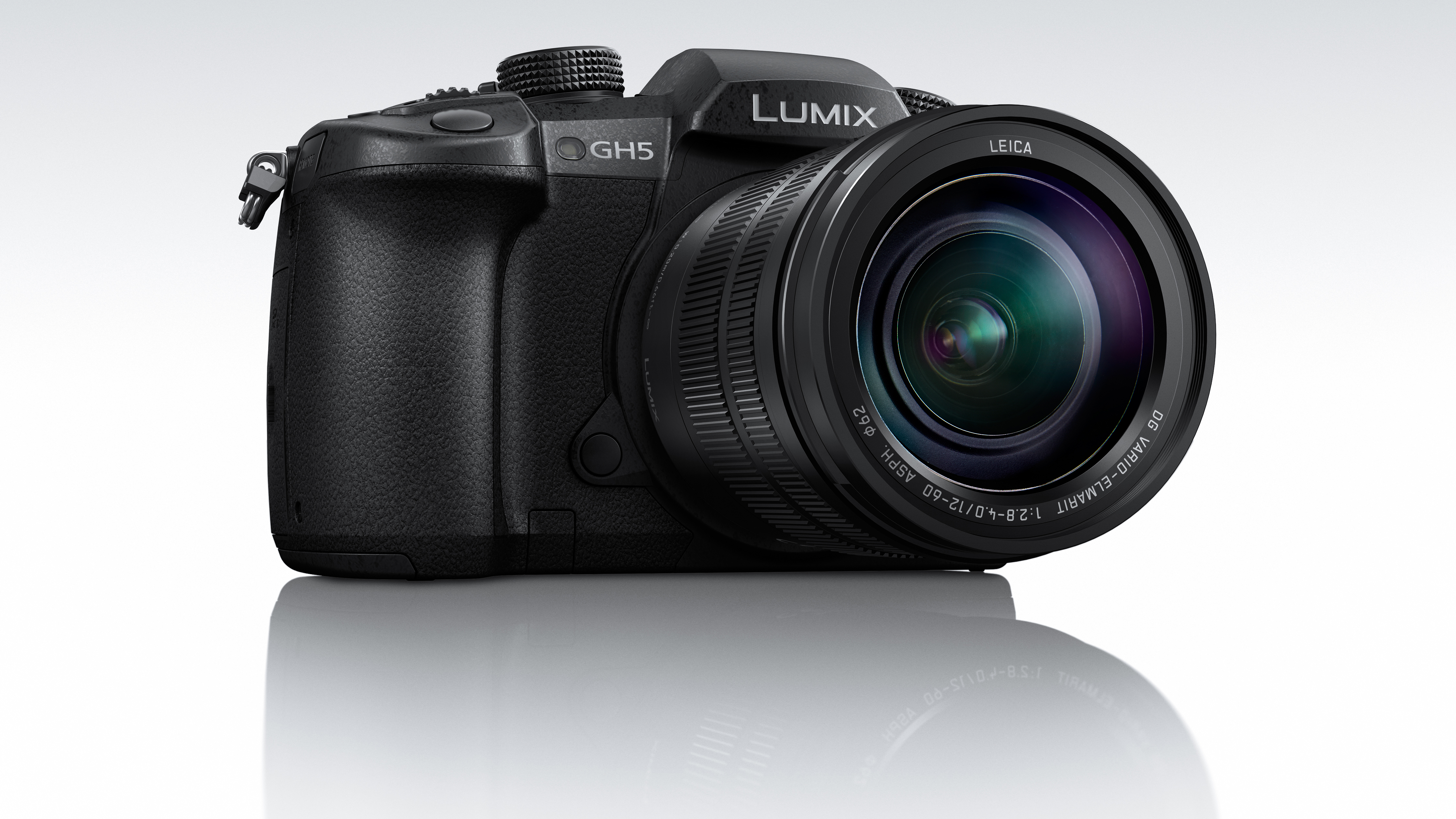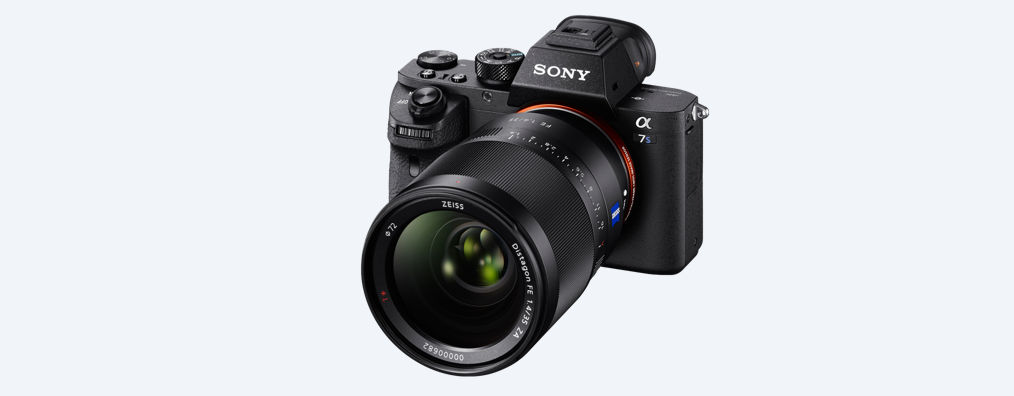There’s never been a better time to make films. If you have a budget of $2,000-$2,600, there are two serious heavyweights to choose from for your video needs. On the one hand, Sony’s entrenched A7S II, a camera most known for its incredible low-light performance. On the other hand, the Lumix GH5, Panasonic’s powerhouse boasting several features unheard of in this price range and well above it, namely a 10-bit codec and soon, 6K video. If you’re already leaning GH5 because of its lower cost, then this will probably be your best bet: the price difference widens once you account for lenses. That said, for some users, the A7S II proves you get what you pay for. If you’re just here to compare specs of these pricey cameras, but are in the market for a cheaper option, check out our selections for the best cheap 4k cameras.
If you’ve decided to buy yourself a camera in this price range, you should be serious about not just videography, but the craft of filmmaking. Neither of these cameras is practical nor straightforward to use at their full capacities. There’s plenty of things that make using either of these cameras challenging: 4K camera file sizes are huge. Shooting video on small, mirrorless cameras can be hard on your hands as they’re not particularly ergonomic. If you need high-quality sound, you will need external equipment to both capture and record audio that matches the quality of either camera’s video. If you’re on the fence and not sure if you need a $2,000+ camera, but you know you want to take better quality video, the best, cheap solution is to get a lighting kit. The difference between a GH5 and an a7s ii is far less than than the difference between either one used with and without a lighting kit. Check out our lighting kit recommendations to learn more.
That said, if one is willing to learn how to use either of these tools, in ideal conditions, the video they capture can be cut with footage from far more expensive cameras including Canon’s C300, the Red Scarlet, and even Arri cameras.
Cyber Monday notice: The A7Sii is on sale today on Amazon for $2,398.
Each camera is impressive in its own right, but let’s get straight to what matters most: what kinds of video you can take and how it looks.
1. A7S II vs GH5: Footage Quality

Screenshot of a GH5 video footage test from YouTuber Jesus Mendez next to screenshot of an A7S II video test from YouTuber Iván Lozano.
Recording Options
Each camera offers many recording options. Both record 120fps (frames per second) up to 1080p, but the GH5 also shoots 180fps 1080p. Similarly, both shoot 4K at 30fps, but the GH4 shoots 4k at 60fps. If slow motion footage is your priority, then the GH5 is a clear winner.
High ISO & Low Light Footage
Let’s drill down into the quality of the footage. In low light, the A7S II excels. The A7s II shoots with its highest dynamic range at 3200 ISO. It can shoot reasonably clean up to 20,000 ISO.

The A7S II can see where the human eye cannot. (Screenshot from a low-light ISO test video by Sony)
The GH5 can to some extent “see in the dark,” but at 6400 ISO (0:18 in the video below), one can see the noise becoming very pronounced. Note: One must be watching video at full resolution to see the noise due to YouTube compression.
Therefore, the GH5 can shoot reasonably clean up to 3200 ISO. FilmRiot also reports 3200 as the maximum clean ISO (YouTube). If one is shooting without lights or wants to be sure they can always capture clean video of a moment, no matter the available lighting, the A7S II is a better choice.
Dynamic Range
A third important factor is dynamic range and the winner here is the A7S II, but not by a significant margin. When a camera has high dynamic range, it allows for shots that have clear shadows (darkest parts of an image), and clear highlights (brightest parts of an image). Both cameras will allow for log shooting, allowing users to maximize dynamic range by shooting a flat image. The A7S II includes two log formats each with their strengths, Slog2 and Slog3. The GH5 has V-Log which will be available for $100 via Panasonic’s website. While dynamic range tests of the GH5 are unavailable, Panasonic’s M. Uematsu says in this interview with Cinema5D, “about dynamic range, when compared to the GH4, it’s slightly better, but not by much I think.”
Looking to DXOmark, a top source for various objective parameters of camera performance, one can glimpse a more scientific picture. GH5 results are not in yet, but the GH4’s dynamic range rating is 12.8 exposure values (ev), while the A7S II’s rating is 13.3ev. Based on M. Uematsu’s quote, it seems safe to say that the A7S II has slightly higher dynamic range. Note: DXOmark rates cameras based on their capturing of still images not videos. Still, these measurements reflect the capability of the sensor even if the application isn’t identical.
Opinions differ on the dynamic range. Some view the following video as demonstrating enhanced clarity and color on the part of the GH5. To my eyes, it appears that the a7s II picks up slightly more range (though its footage is slightly more exposed than the GH5). Look, for instance, at the apparent depth of the trees behind the river in the opening shots of the video below (they appear graded at 1:00).
Color Depth
Color depth is another factor and the GH5 is capable of recording 10-bit footage unlike the A7S II. This is a huge selling point as it is the first in its class to do so.
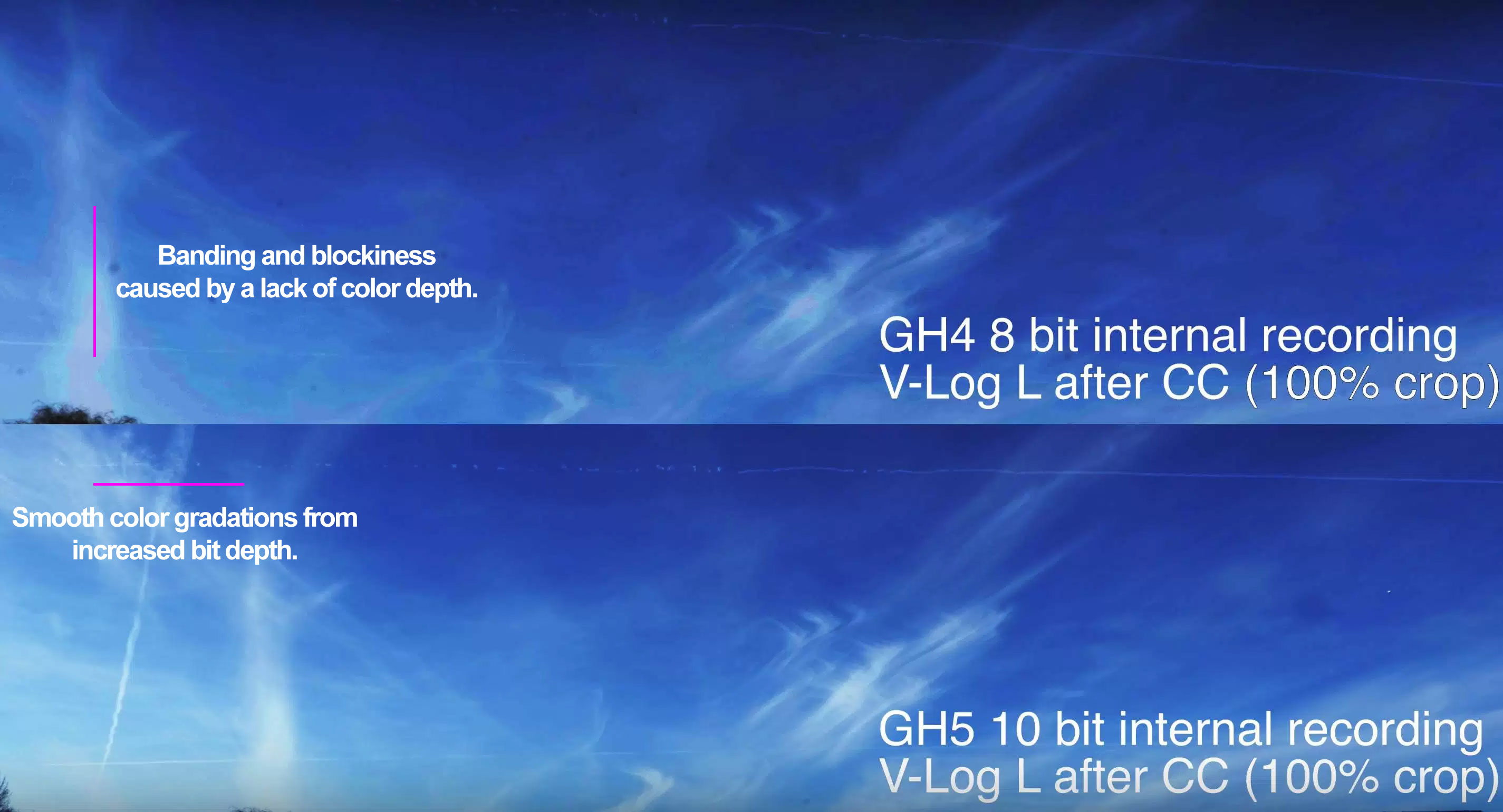
Observe the top image and note how the 8-bit, graded footage has less available tones and thus became blocky. (Juxtaposed screenshots of 8 bit vs 10 bit test by YouTuber, Slashvid)
Many have pointed out that the above footage isn’t an accurate representation because it is an “extreme grade,” but this is primarily what increased bit depth provides: more information for coloring. 10-bits of color guarantees flexibility in post because it captures more specific color detail. That said, it does not increase the dynamic range of the camera. It increases the total available colors within the dynamic range. To explain in coarse terms, the 10-bit color permits one to see the difference between an evenly lit magenta and pink, but it doesn’t let you see the difference between a magenta lit by only a candle and a pink lit by the sun- that’s dynamic range. FilmRiot confirms that the GH5 has better color depth when footage is pushed to an extreme level (YouTube); the A7S 2 suffers from banding.
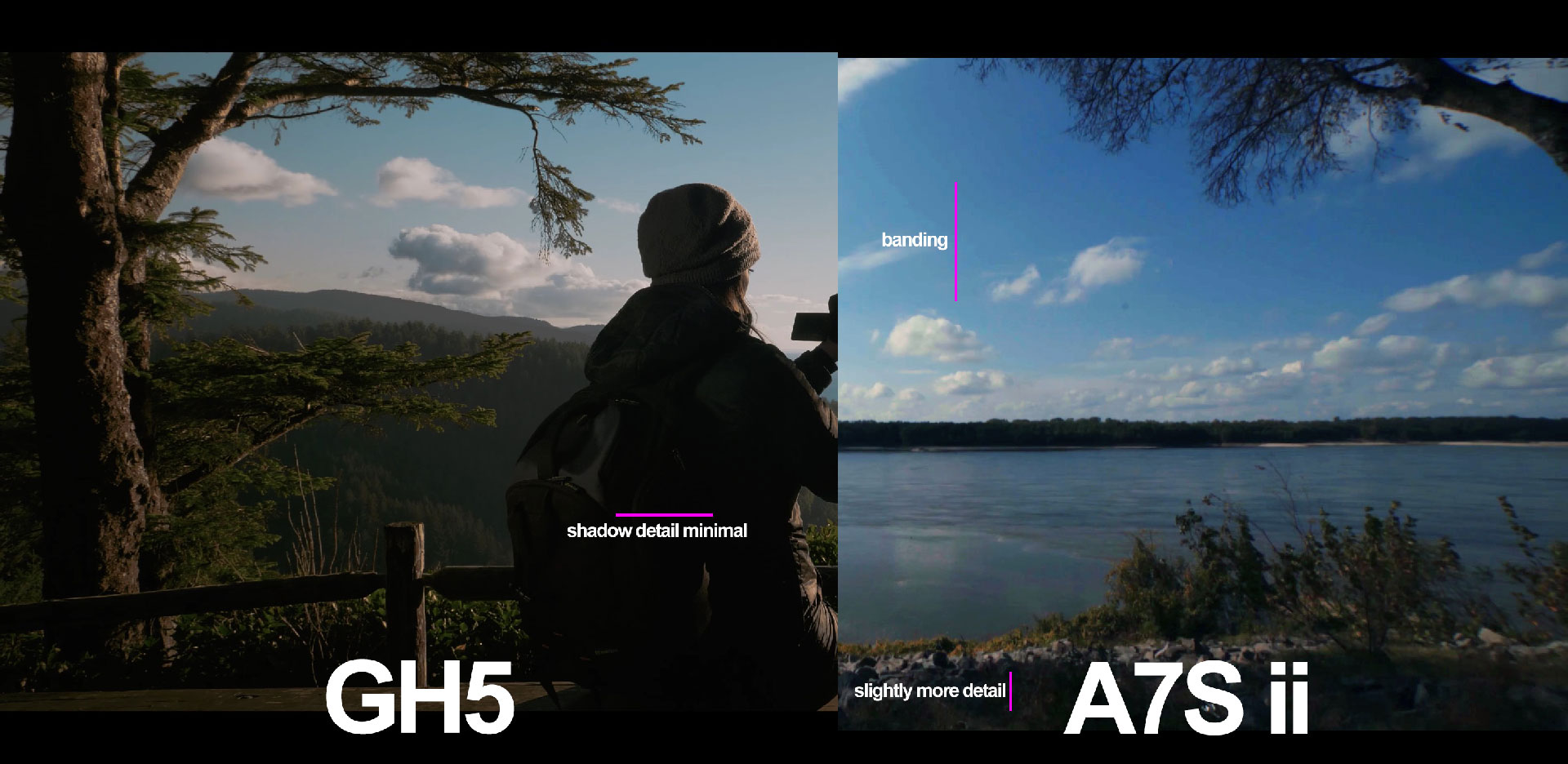
The GH5’s 10-bit recording permits for less banding, but the overall dynamic range of the cameras is similar. (Screencap of GH5 YouTube video by Jesus Mendez next to screencap of A7S II YouTube video by Mankind Films)
Rolling Shutter
Another factor in footage quality is “rolling shutter.” Rolling shutter is caused by having a sensor read out that is not global (all at once). Since some lines are scanned later than others, they receive different information. This leads to skewed images. That said, this problem is more pronounced on full frame sensors (like the A7S II) than much smaller sensors like the GH5.
On the GH4, only extreme movement was an issue (you can check out this YouTube video of GH4 recording while being rapidly moved back and forth to see this for yourself). Since the GH4 and GH5 have the same size sensor, it is likely they will have similar rolling shutter performance.
Below see A7S II footage to have an idea of its rolling shutter issues. For fast or even medium speed panning, it becomes noticeable. That said, if one shoots in 1080p on the A7S II, this dramatically reduces the rolling shutter.
One can see the GH5 and the A7S II compared back to back below. It’s clear that the GH5 suffers only under fast panning, the A7S II gets that “jello” look with even mild panning.
Sensor Size (Depth of Field)
A final factor is sensor size. The A7S II has a full frame sensor while the GH5 has a Micro Four Thirds sensor. This means that achieving shallow depth-of-field (DOF) will be easier on an A7SII than a GH5. For instance, shooting at f4 on an A7SII will give one some sense of depth, but to achieve that on a GH5 one would have to shoot at f2. This can also prove advantageous, however, since shooting with extremely shallow depth of field can be less preferable than shooting with more light. It also means that shooting at f4 on a GH5 is like shooting at f8 with an A7S II. This can be an advantage or a disadvantage depending on your tastes. For those who don’t like shooting with shallow depth-of-field, the GH5’s properties in this right help shield it against the A7S II’s low-light advantage; an A7S II may be able to shoot at 25,000 ISO, but in order to get a sharp shot, the lens will need to be at f5.6. While the GH5 will be stuck at 3200, it can shoot at f2 with similar DOF. If you want to learn more about sensor size and depth of field, try experimenting with CambridgeInColour.com’s calculator.
Both cameras offer professional video camera features like focus peaking, zebras and a variety of color profiles.
Overall, each camera offers different things. The GH5 offers more capture options with greater color depth (10-bit) while the A7S II offers unparalleled low light capability and slightly better dynamic range.
Note: Cinema5D reports that Panasonic plans on adding several other features into the GH5’s repertoire by Summer 2017 including 6K anamorphic video, and FHD 200mbps and 10bit 400mbps all-intraframe recording. The former will increase the max resolution and the latter will allow for more extreme grading in an intraframe codec (codecs that do not interpolate between frames capture motion more accurately). This will only expand the GH5’s lead in terms of capture options. It will not likely impact any other factors discussed, however. Currently, the A7S II shoots 100mbps 4k, while the GH5 will start with 150mbps. The GH5 is also slated to add HDR recording, reports 4K.com. Since no details nor footage have been released, this factor was not considered.
See the Sony A7S II on Amazon
See the Panasonic GH5 on Amazon
2. A7S II vs GH5: Viewfinder & Screen
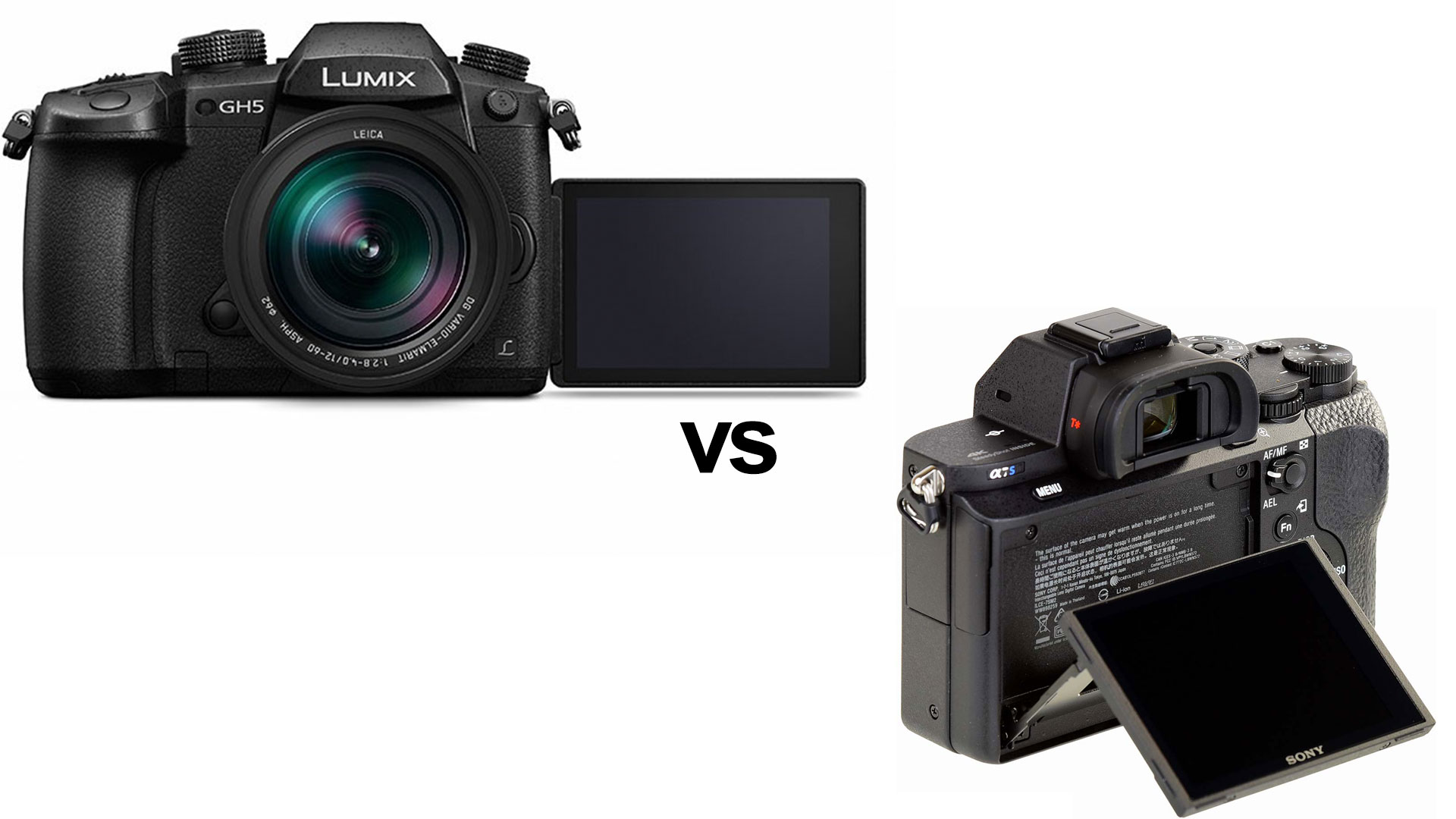
The GH5’s screen allows for selfies while the A7S II’s does not. (Amazon)
The GH5’s screen rotates as seen above and has a resolution of 1.62 million dots. The A7S II screen only pops out and tilts up and down and has a resolution of 1.2 million dots. Note that a pixel is constructed of three dots, as explained in this TechCrunch article.
Both cameras are mirrorless and hence looking through the viewfinder means looking at a digital screen. The GH5’s viewfinder has 3.68 million dots and The Verge said that “it’s a joy to look through.” The A7S II’s viewfinder has 2.4 million dots, significantly less.
Note that neither cameras’ viewfinders or displays lets you view the footage you are capturing anywhere near its real quality. In order to do this, one would need a high resolution external display, such as the Pangshi S7, a 1080P display that works with either camera’s output HDMI port. Even this display is still only showing one quarter of the resolution that 4k captures. That said, the viewfinder and on-camera display should give you an accurate if imprecise idea of the image you are capturing. Using focus-peaking, it is not difficult to achieve a sharp image.
For YouTubers and other selfie-inclined folks, a fully articulated screen may seal the deal for the GH5. In general, the articulated screen can be nice for capturing original and strange angles, such as holding the camera above your head, or filming from on the ground.
Overall, the GH5 has a large advantage in this department. Its viewfinder and screen have more detail. The articulating screen is also handy for many use cases.
See the Sony A7S II on Amazon
See the Panasonic GH5 on Amazon
3. A7S II vs GH5: Photography & Stills
In terms of features, the GH5 excels in this right in a similar manner to its video capabilities: it allows for more capturing options. The A7S II has better low light performance, but this difference is not as pronounced with photography.
The GH5 can capture photographs much faster than the A7S 2 (12fps compared to 5fps) and it has almost twice as much detail (20 megapixels compared to 12, as many megapixels as an iPhone 7‘s camera). In addition, the GH5 has a buffer of 100 photos even when shooting in RAW. Another feature the GH5 has that the A7S II does not is that one can shoot “video” that then allows the user to extract 18-megapixel stills, reports The Verge.
The A7S II shoots in RAW, but it lacks similar features in terms of buffering and speed. The A7S II’s low-light abilities are also shockingly restricted with photography. While it does allow capturing at high ISOs, photographs captured above even 6400 show visible noise (Gizmodo) unlike video recorded with the A7S II. One can see a variety of images at different ISOs and in different conditions at ImagingResource.com for both the A7S II and the GH5.
If shooting high-quality photos at a fast rate is important for you, then the GH5 will prove a better choice. Note that image below is from an unknown camera, but illustrative of the kinds of precisely-timed images high frame rate cameras like the GH5 allow one to capture.
Again, the A7S II is a superior choice for low-light flexibility, but here the edge is less than with video. The A7S II’s amazing low light abilities are most pronounced when shooting video. You can see grain starting at 6400 ISO on these images from ImagingResource.com.
4. A7S II vs GH5: Auto-Focus, Stabilization, & Lenses

(Sony)
Autofocus
Both cameras have auto-focus abilities. The A7S II is not regarded as auto-focusing particularly fast (according to MirrorlessComparison.com) nor accurately for video; most shooters will prefer to use manual focus. Moreover, autofocus on the A7S II requires expensive lenses.
According to Panasonic, the GH5 will autofocus twice as fast as the GH4 reports The Verge. The GH4 has reasonably quick autofocus performance, even in 4K. The GH5 has considerably better autofocus at a cheaper price.
Stabilization
Both cameras feature five-axis, in-camera stabilization. Panasonic claims that the GH5’s IS (image stabilization) can compensate for five stops of shutter speed. Sony makes a similar claim.
The GH5’s internal stabilization coupled with Leica’s new 12-60mm f2.8-4 (coming in late March for $999 (dpreview.com) optical stabilization almost adds enough stability to make walking footage smooth.
Each camera can work with three axis gimbal stabilizers
Both the GH5 and a7sii are small enough to be wielded by the Ronin-M and other stabilizers. That said, the GH5’s autofocus will prove extremely handy in this use case, since focus while a camera is mounted to a stabilizer is difficult. Learn more about our favorite gimbal stabilizers here.
Lenses
The Sony uses e-mount lenses, but it is not compatible with all of them. Many Sony shooters purchase a Metabones adapter which allows aperture and focus control on Canon (or other) lenses.
The GH5 uses a Micro Four Thirds mount which has a wide array of affordable and effective lenses. As discussed in the price section, the GH5 can also use a Speedbooster, which allows it to use EF (Canon) lenses and to gain more sensitivity to light.
The price savings on lenses is reduced if one intends to shoot with manual-focus lenses. For instance, a Rokinon f1.5 85mm lens costs $299 for the A7S II . The same lens for the GH5 (Micro Four Thirds Mount) costs $269. Note that 85mm on an A7S II is a tight, telephoto shot. On a MFT camera like the GH5, it is the equivalent of a 170mm lens, extremely close-up.
The GH5 has superior auto-focus, comparable stabilization, and more affordable auto-focus and zoom lenses. Manually-focusing, prime lenses are similar in price for each camera.
5. A7S II vs GH5: Price
The GH5 is a clear winner in regard to price because the body and lenses are cheaper. The body of a GH5 currently costs around $1,997.99 (Amazon) while an A7S II body costs about $2,398 (Amazon, Cyber Monday Sale). A GH5 with a 25mm 1.7f lens with autofocus will run you $2247. An A7S II with the cheapest possible auto-focus lens (Sony FE 50mm 1.8 ) is around $2,800. That said, if one is trying to improve the low light performance of the GH5, its price becomes comparable to the A7S II.
The Metabones Speed Booster Ultra lets one use Canon EF lenses on the GH5’s Micro Four-Thirds mount. It costs $649.99, while retaining auto-focus and aperture adjustment of any attached Canon lenses. It will allow a GH5 to shoot clean at 6400 ISO. Note that this ISO sensitivity is nowhere near the A7S II’s max clean ISO of ~20,000, but given a fast lens (such as the Canon 50mm 1.8f, $125) it will permit shooting in many low light environments. That said, not every Canon lens will focus effectively or quickly with the Speedbooster.
Similar adapters can be purchased from Amazon.com for the A7S II but due to its larger sensor size, speed boosting is not possible. Canon is widely considered to be the standard for lens selection. Sony lenses are extremely expensive, but for someone looking for versatility when shooting (zoomability, auto-focus), they can be a strong choice.
Both cameras write to SD cards and for most professional shooting needs will require external audio recorders and microphones. Note: One must use special high-speed SD cards due to the huge amount of data coming off the cards. The most affordable 64GB card (PNY, Elite Performance) that will write the highest quality footage for the A7S II is $24.99 on Amazon.
For most users and use cases, the GH5 is the more affordable option.
See the Sony A7S II on Amazon
See the Panasonic GH5 on Amazon
6. A7S II vs GH5: Other Details
The devil is in the details, but for most people, these are things that either won’t be that important or where the edge is slight.
The A7S II has a limit of 29:59 per video clip. This could be annoying for some users; the GH5 has no such limit. They weigh similarly, but the A7S’ lenses are larger so it may be noticeably heavier depending on the lens. The cameras have similar battery life. CameraDecision.com says as measured by stills, the GH5 gets slightly more shots per battery: 410 to the A7S II’s 370. The GH5 can record time-lapses out of the box. The A7S II needs an app that costs $9.99 on Sony’s Play Memories store. The GH5 also has two memory card slots instead of one like the A7S II. This feature permits for automatic back-up recording, relaying (when one card is full, the camera switches to the other card seamlessly), and hot-swapping (changing out of a memory card while the other card continues recording), according to Cinema5d.
For most, none of these details will be deal-breakers, but the GH5 does have many tiny perks that lean in its favor: longer battery life, unrestricted clip length, and time-lapses out of the box. For the paranoid, having two memory slots and the option to record duplicate footage may cause effective anxiety relief.
Buy the Sony A7S II here.
Buy the Panasonic GH5 here.
7. A7S II vs GH5: Summary

(Amazon)
For those who don’t prioritize flexibility with lighting, the GH5 offers more value. It shoots more ways at a lower price and within reasonable operating parameters in terms of ISO. The lenses are more affordable. Due to its small sensor size, it allows for more shots with everything in focus. The GH5 is ideal for video-makers of all kinds, especially YouTubers. It is a very flexible camera that offers many awesome recording options and will work for most scenarios. It has less issues with rolling shutter.
That said, if late-night “run and gun” filmmaking is your calling, if you own small lights or none, and if you want to be able capture every moment confident that you’ll have the gear to do the job, the A7S II offers unmatched low light sensitivity. In the end, cameras aim to do one thing: capture light. When it comes to catching every last photon, the A7S II is a tool that is up to the task. If you are not shooting in daylight or environments where you control the lighting, then the A7S II buys ultimate peace of mind. It also buys slightly more dynamic range for that extra edge toward a filmic look. It’s more of a filmmaker’s camera than a Youtuber’s camera.
Both cameras are top of their class but excel in different ways. If you’re still on the fence about which is the camera for you, an important thing to remember is that these cameras are more similar than they are different. They both offer professional, stunning motion picture and images at extremely high resolutions. They’re both amazing devices. Get out there and shoot.
See the Sony A7S II on Amazon
See the Panasonic GH5 on Amazon
